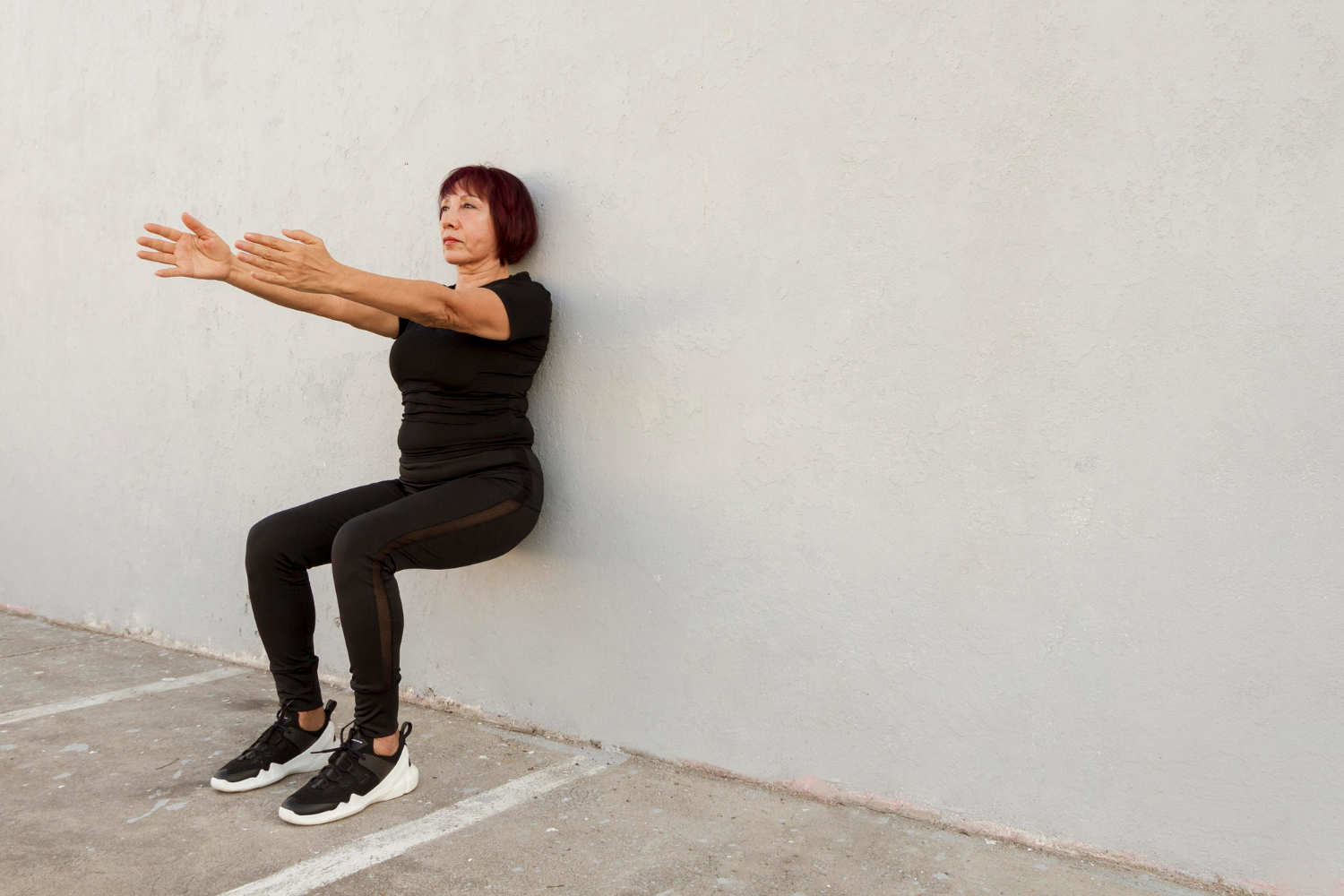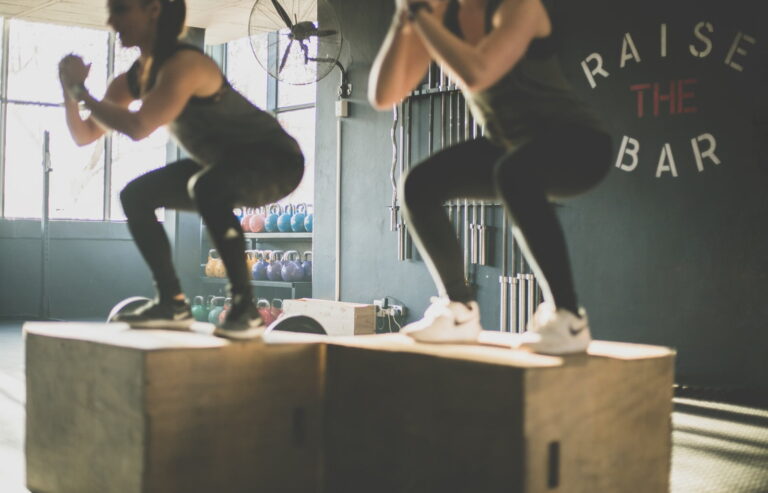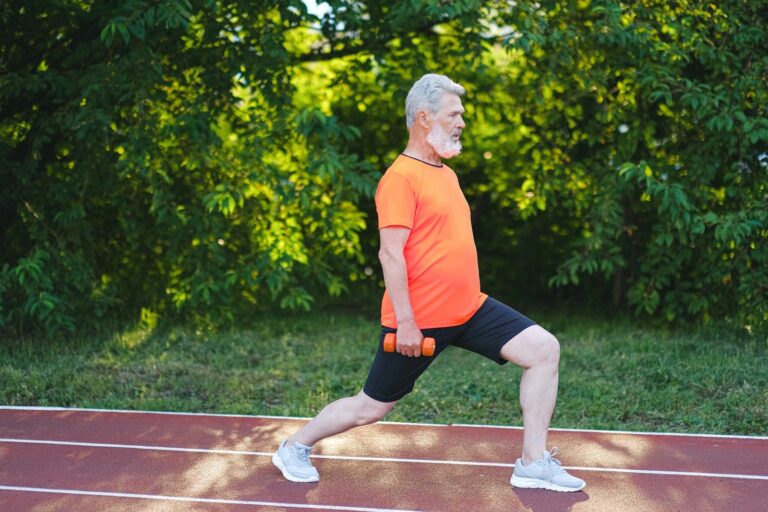Wall sits are a popular isometric exercise that targets the quadriceps, glutes, and core muscles. Despite their simplicity, people often make mistakes when performing wall sits, which can reduce their effectiveness and potentially lead to injury.
Table of Contents
The Power of Wall Sits: Unlocking the Benefits for Your Fitness Journey
Wall sits, often underestimated, are a powerhouse of an isometric exercise. They target the lower body, specifically working the quadriceps, glutes, hamstrings, and calves. This simple yet effective exercise offers a multitude of benefits for your overall fitness and well-being.
Achieve Stronger Lower Body Muscles
Incorporating wall sits into your routine will help build strength and endurance in your lower body muscles. This can lead to improved performance in various sports and everyday activities, such as climbing stairs, walking, or running. For example, athletes involved in skiing or basketball can benefit significantly from the added leg strength gained through wall sits.
Boost Your Core Stability
Focusing on engaging your core muscles during a wall sit not only enhances your core strength and stability, but it’s also essential for maintaining proper posture and preventing lower back pain. Imagine your core as the foundation of a building – a strong, stable base is crucial for its overall stability and longevity.
Increase Muscular Endurance
As an isometric exercise, wall sits have a unique advantage in increasing muscular endurance. This allows you to perform other activities and exercises for longer periods without fatigue, making it easier to reach your fitness goals.
Tip: Try holding a wall sit for 30 seconds, then increase the duration over time as your endurance improves.
Work Out Anywhere, Anytime
One of the most appealing aspects of wall sits is their convenience and accessibility. All you need is a flat vertical surface, and you can perform this exercise virtually anywhere – at home, the office, or even while waiting for your morning coffee to brew.

10 Common Mistakes of Wall Sit
Incorrect Posture
To maintain proper alignment during a wall sit, follow these guidelines:
Back
- Flat against the wall: Keep your back flat against the wall. This helps to evenly distribute your body weight and reduces strain on your spine.
Shoulders
- Relaxed position: Relax your shoulders, ensuring they are not hunched or tense. This helps to maintain a neutral upper body posture.
Head
- Neutral position: Position your head in a neutral position, looking straight ahead. This helps to maintain proper spinal alignment and prevents strain on your neck.
Avoid slouching or arching your back, as these mistakes can lead to unnecessary strain on your spine and reduce the effectiveness of the exercise.
Knees Over Toes
To maintain proper knee alignment during a wall sit, follow these guidelines:
Knee Positioning
- 90-degree angle: Ensure your knees are positioned directly above your ankles, forming a 90-degree angle. This helps to maintain proper leg alignment and reduces stress on your knee joints.
Visual Check
- Check your toes: Look down at your feet while in the wall sit position. You should be able to see your toes without leaning forward. If your knees extend beyond your toes, adjust your foot positioning to correct the alignment.
Avoid allowing your knees to extend beyond your toes, as this mistake can place excessive stress on your knee joints, leading to discomfort or potential injury.
Feet Positioning
To ensure optimal feet positioning during a wall sit, follow these guidelines:
Feet Placement
- Hip-width apart: Place your feet hip-width apart and at a distance from the wall that allows your knees to align with your ankles, forming a 90-degree angle. This helps to maintain proper posture and minimizes strain on your knees.
Adjustment
- Proper alignment: If you find that your feet are too close or too far from the wall, shift your feet forward or backward until your knees are properly aligned with your ankles.
Avoid placing your feet too close to the wall, as this can cause strain on your knees. Similarly, avoid placing them too far away, as this can make it difficult to maintain proper posture during the exercise.
Heels Lifting Off the Ground
To maintain stability and engage the correct muscles during a wall sit, follow this guideline:
Heels on the Ground
- Firmly planted: Keep your heels firmly planted on the ground throughout the exercise. This helps to ensure proper form, maintain balance, and prevent imbalances or injuries.
Avoid lifting your heels off the ground, as this can compromise your form and stability, making the exercise less effective and potentially increasing the risk of injury.
Holding Your Breath
Breathing is essential during any exercise, including wall sits. Keep these points in mind:
Steady Breathing
- Consistent breaths: Remember to breathe steadily throughout the movement. This helps to maintain proper oxygen flow, support muscular endurance, and prevent dizziness.
Avoid Breath-Holding
- Stay conscious of breathing: Holding your breath during exercise can cause dizziness and elevated blood pressure, which may lead to discomfort or potential health risks.
By focusing on maintaining a steady breathing pattern during a wall sit, you can ensure a safer and more effective exercise experience.
Not Engaging Your Core
Engaging your core muscles is essential during a wall sit for stability and lower back protection. Keep the following points in mind:
Tighten Your Core
- Brace your abdominals: Focus on tightening your abdominal muscles, as if you are bracing for a punch, to provide additional support and prevent strain on your lower back.
Maintain Engagement
- Stay engaged throughout: Keep your core muscles engaged throughout the exercise to maintain stability and protect your lower back from unnecessary strain.
By actively engaging your core during a wall sit, you can improve your form, increase the effectiveness of the exercise, and reduce the risk of injury or discomfort.
Ignoring Pain or Discomfort
It’s crucial to listen to your body during any exercise, including wall sits. Keep these points in mind:
Stop If You Experience Pain
- Listen to your body: If you feel pain or discomfort during a wall sit, stop the exercise immediately. Continuing to push through pain can lead to injury.
Consult a Professional
- Seek advice: Consult a fitness professional or healthcare provider to address any concerns and receive guidance on proper form or modifications.
Prioritize Safety
- Focus on well-being: Always prioritize your safety and well-being when exercising. Pain is a signal from your body that something may be wrong, so it’s essential to address the issue rather than ignore it.
By paying attention to pain or discomfort and seeking professional guidance, you can prevent potential injuries and ensure a safer, more effective exercise experience.
Overdoing It
To prevent overexertion and potential injuries during wall sits, follow these guidelines:
Start with Shorter Durations
- Begin with shorter holds: Start with shorter wall sit holds, such as 15 to 30 seconds, depending on your current fitness level. This helps you build strength and endurance without overtaxing your muscles.
Gradual Progression
- Increase time gradually: As your strength and endurance improve, gradually increase the time you hold the wall sit. Aim for small increments, such as adding 5 to 10 seconds to your hold time each week.
Listen to Your Body
- Pay attention to your body’s signals: Be mindful of how your body feels during and after the exercise. If you experience excessive soreness or fatigue, consider reducing the duration or taking additional rest days.
By starting with shorter durations and gradually progressing, you can minimize the risk of overexertion, muscle strains, and other injuries, while effectively building strength and endurance.
Inconsistent Technique
Consistent form and technique are key to maximizing the benefits of wall sits and minimizing the risk of injury. Keep these points in mind:
Proper Form
- Focus on correct technique: Always perform wall sits with proper form and technique, focusing on maintaining proper alignment, engaging your core, and keeping your heels on the ground.
Regular Practice
- Reinforce good habits: Consistency in your exercise routine can help improve your technique over time. Make sure to incorporate wall sits into your routine regularly to reinforce proper form.
Avoid Rushing
- Take your time: Give yourself ample time when setting up for a wall sit to ensure you are in the correct position. Rushing the exercise can lead to improper form and increase the risk of injury.
By prioritizing consistent technique during wall sits, you can enhance the exercise’s effectiveness and reduce the likelihood of injury or discomfort.
Neglecting Other Muscle Groups
Although wall sits effectively target specific muscle groups, a well-rounded fitness program should include a variety of exercises. Keep these points in mind:
Balanced Workouts
- Target different muscle groups: Incorporate exercises that target various muscle groups, such as upper body, lower body, and core, to create a balanced workout routine. This ensures overall muscle development and prevents imbalances.
Variety of Exercises
- Promote overall fitness: Include a mix of strength training, cardiovascular exercise, and flexibility training to promote overall fitness and reduce the risk of injury.
Functional Movements
- Improve strength and mobility: Consider incorporating functional exercises, such as squats, lunges, and push-ups, which mimic everyday movements and improve overall strength and mobility.
By incorporating a variety of exercises targeting different muscle groups and aspects of fitness, you can create a comprehensive and effective workout routine that supports your long-term health and well-being.

Integrating Wall Sits into Your Fitness Regimen: A Step-by-Step Guide
Wall sits, with their numerous benefits and adaptability, can be easily integrated into your workout routine. Here are some practical ways to include this versatile exercise in your fitness plan:
Warm-Up or Cool-Down: Activate and Relax Your Muscles
Incorporate wall sits as part of your warm-up or cool-down routine, holding the position for 15 to 30 seconds. This not only engages the lower body muscles but also improves circulation, preparing your body for the upcoming workout or helping it recover afterward.
Circuit Training: Keep Your Workouts Engaging and Challenging
Add wall sits to your circuit training routine, alternating them with other exercises targeting different muscle groups. This approach keeps your workouts fresh and stimulating, preventing boredom and plateaus.
Example: Combine wall sits, push-ups, and plank for a full-body circuit workout.
Supersets with Lower Body Exercises: Amplify Your Results
Perform a wall sit immediately after completing a set of another lower body exercise, such as squats or lunges. This approach, known as a superset, further challenges your muscles and enhances your overall lower body strength.
Progressive Overload: Push Your Limits for Continued Progress
As your strength and endurance improve, gradually increase the duration of your wall sits or add resistance to make the exercise more challenging. This principle of progressive overload ensures that you continue to see progress and avoid plateaus.
Tip: Use a resistance band or dumbbells to intensify your wall sits.
Conclusion
Wall sits are an effective and versatile exercise that can greatly benefit your fitness journey. By incorporating them into your routine and avoiding common mistakes, you can unlock their full potential for building lower body strength, core stability, and muscular endurance. With the proper technique and a balanced approach to fitness, wall sits can be a powerful tool in achieving your long-term health and well-being goals.
Whether you’re warming up, cooling down, or seeking an extra challenge during your workouts, wall sits can be easily integrated into your fitness regimen. Stay consistent, listen to your body, and enjoy the journey to improved strength and endurance.
FAQs
What are wall sits?
Wall sits can be safe when performed correctly. However, it is important to follow proper form and technique to prevent injury. It is also recommended to listen to your body and stop the exercise if you experience pain or discomfort.
Are wall sits safe?
Wall sits can be safe when performed correctly. However, it is important to follow proper form and technique to prevent injury. It is also recommended to listen to your body and stop the exercise if you experience pain or discomfort.
What are the benefits of wall sits?
Wall sits can help improve lower body strength and endurance, boost core stability, and increase muscular endurance. The exercise is also convenient and can be performed anywhere with a flat vertical surface.
Can wall sits help with weight loss?
Wall sits can help with weight loss as part of a comprehensive fitness routine that includes cardio and a healthy diet. The exercise can help build muscle, which can increase metabolism and burn more calories.
How long should I hold a wall sit?
It is recommended to start with shorter durations, such as 15 to 30 seconds, and gradually increase the time as your endurance improves. It is important to listen to your body and not overdo it.
How often should I do wall sits?
The frequency of wall sits depends on your fitness goals and current fitness level. It is recommended to incorporate the exercise into a comprehensive fitness routine that includes a variety of exercises targeting different muscle groups.


